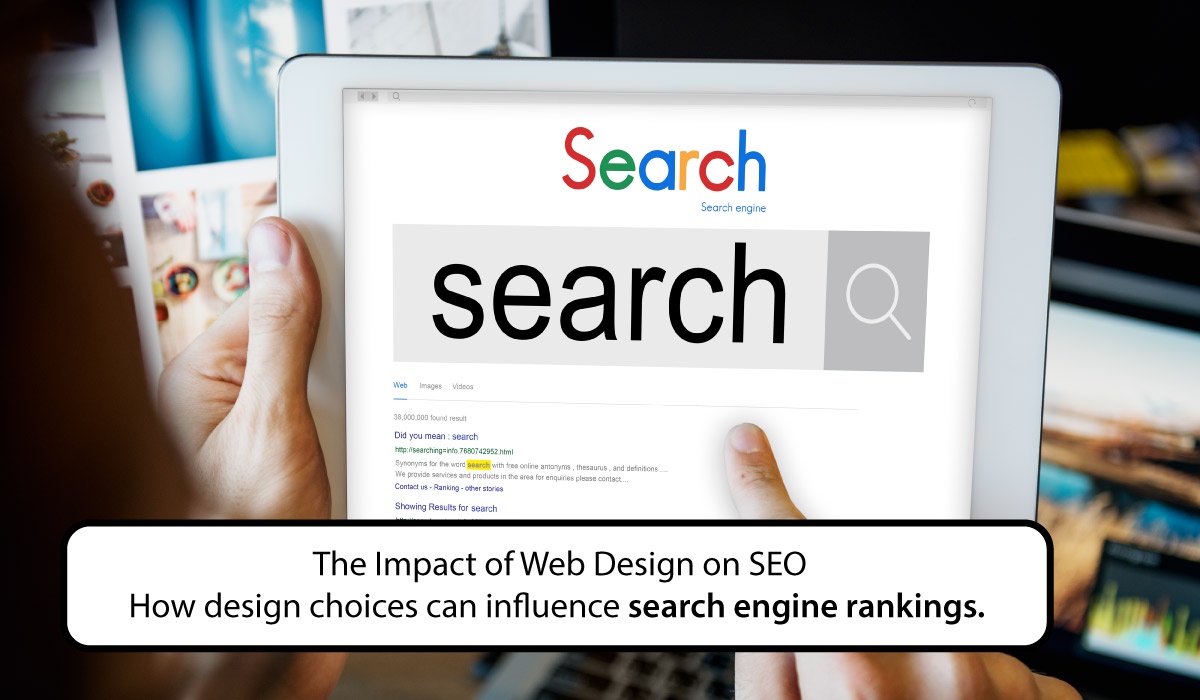In the ever-changing landscape of the digital world, the relationship between web design and search engine optimization (SEO) has become increasingly intertwined. A well-designed website not only enhances user experience but also plays a crucial role in determining its visibility and ranking on search engine results pages (SERPs).
In this blog, we will explore the impact of web design on SEO and delve into the key design choices that can significantly influence search engine rankings.
Mobile Responsiveness and User Experience
In the mobile-first era, Google and other search engines prioritize mobile-friendly websites in their rankings. A responsive web design ensures that your site adapts seamlessly to various screen sizes and devices, providing users with a consistent and user-friendly experience. A mobile-friendly site reduces bounce rates and increases user engagement, signaling to search engines that your site is relevant and valuable to users, leading to potential improvements in SEO rankings.
Page Loading Speed
Page loading speed is a critical factor in both user experience and SEO. Slow-loading websites frustrate users and often lead to higher bounce rates, which negatively impact SEO rankings. Optimizing design elements such as images, scripts, and CSS can significantly improve loading times. Consider implementing lazy loading for images and deferring non-essential scripts to improve the overall performance of your website.
Site Architecture and Navigation
A well-structured site architecture and intuitive navigation enhance user experience and improve search engine crawling. A clear and organized hierarchy makes it easier for search engine bots to index your content, ensuring that important pages are discovered and ranked appropriately. A user-friendly navigation system also helps visitors find relevant information quickly, leading to higher engagement metrics that positively affect SEO, opined a website designer in Toronto.
Quality and Relevant Content
While web design directly impacts the user interface, it also influences how content is presented and consumed. Well-designed layouts and typography can enhance readability and emphasize key information, making your content more engaging and valuable to users. High-quality and relevant content is essential for SEO, as search engines prioritize websites that offer valuable and informative content to users.
URL Structure and Permalinks
A clean and descriptive URL structure not only makes it easier for users to understand the content of a page but also aids search engine crawlers in indexing and ranking your website. Utilize relevant keywords in permalinks and avoid using generic alphanumeric strings. Additionally, consider using hyphens to separate words in URLs for better readability and SEO.
Image Optimization
Images are an integral part of web design, but they can also significantly impact page loading times. Properly optimizing images by compressing their size without compromising quality can improve site performance and positively influence SEO rankings. Additionally, using descriptive alt tags for images helps search engines understand their context and can potentially improve your website's visibility in image search results.
Schema Markup and Rich Snippets
Implementing schema markup on your website enables search engines to understand the content and structure better. This can lead to the display of rich snippets in search results, providing users with additional information and improving click-through rates. Rich snippets can include star ratings, product prices, event details, and more, making your site more appealing to users and search engines alike.
Secure and HTTPS Protocol
Website security is paramount in today's digital landscape. Search engines prioritize secure websites that use the HTTPS protocol over non-secure ones. Implementing an SSL certificate not only ensures data encryption and protects user information but also positively impacts SEO rankings.
Internal and External Linking
Properly interlinking your website's pages helps search engines understand the structure and context of your content. Internal linking enhances user navigation and encourages users to explore more of your website, which can lead to increased time on site and better SEO rankings. Similarly, external linking to reputable sources and relevant content adds credibility to your website, and search engines reward such practices with improved rankings.
Social Media Integration
While social media signals do not directly impact SEO rankings, integrating social media buttons and sharing options can indirectly influence SEO. When users share your content on social media platforms, it increases the visibility and potential reach of your website, leading to increased organic traffic and brand recognition, which can ultimately have a positive impact on search engine rankings.
Conclusion
Web design and SEO are closely interconnected, and design choices can significantly influence a website's search engine rankings. Prioritizing mobile responsiveness, page loading speed, user experience, content quality, and technical optimization can help improve your website's visibility and authority in the eyes of search engines. A well-designed website not only engages users but also sends positive signals to search engines, positioning your site for better SEO performance and increased organic traffic.


No comments yet